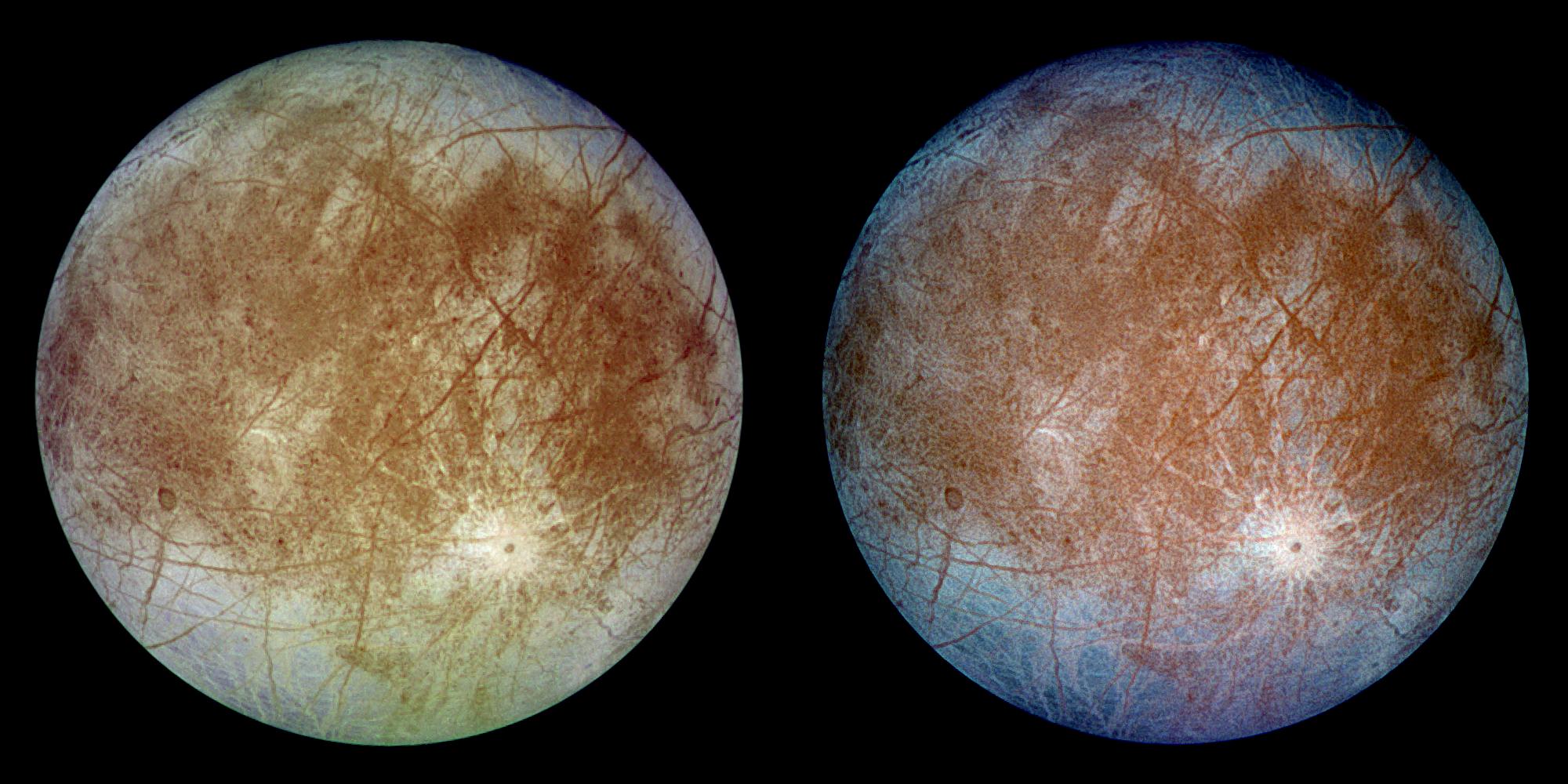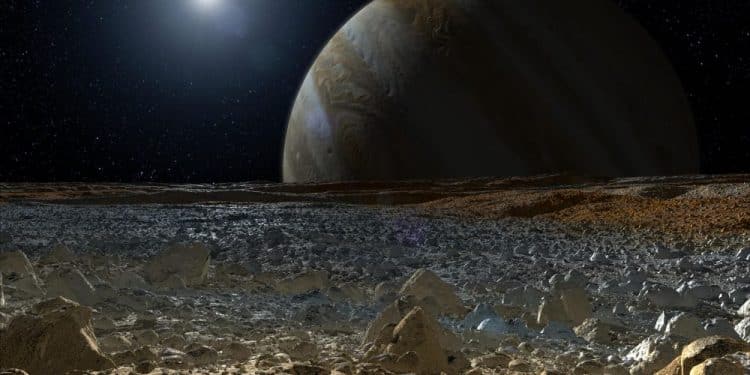Thanks to high-resolution spacecraft data, you can now experience what it might be like to fly over Jupiter’s moon Europa, one of the most intriguing and potentially habitable worlds in our solar system. This icy moon, covered in a fractured crust and hiding a massive subsurface ocean, continues to captivate scientists and stargazers alike.

A frozen moon hiding an ocean
Jupiter’s moon Europa is a frozen world orbiting the largest planet in the solar system. It’s slightly smaller than Earth’s Moon and is one of the four Galilean satellites discovered by Galileo Galilei in 1610. Despite its distance of nearly 628 million kilometers (390 million miles) from Earth, Europa remains a top candidate in the search for alien life.
Its surface is a mosaic of intersecting cracks and ridges, with very few impact craters—suggesting the outer ice shell is constantly reshaped. Beneath that icy crust lies something extraordinary: a vast, global ocean that may contain more than twice the amount of water found on Earth. This hidden sea, kept liquid by internal heat from tidal flexing, could provide the essential conditions for life.
What a simulated flyover reveals
Simulated flyover footage—created from spacecraft imagery—reveals Europa’s dramatic terrain. Deep ridges, chaotic ice formations, and long linear fractures stretch across the moon’s surface. These features are the result of powerful gravitational interactions with Jupiter, which generate enough heat to keep the subsurface ocean in a liquid state.
Europa’s crust is estimated to be between 15 to 25 kilometers thick, with the ocean beneath possibly extending another 100 kilometers. The combination of water, internal energy, and essential elements like oxygen and salt compounds makes Europa one of the most likely places to find extraterrestrial life in our cosmic neighborhood.
The moon’s thin oxygen atmosphere, though not breathable, adds to its intrigue. Surface chemistry suggests that oxidants and salts could be cycled from the surface into the ocean, fueling potential biological activity. Some scientists believe hydrothermal vents—similar to those found in Earth’s deep oceans—could exist on Europa’s ocean floor, providing energy for life in the dark.
A target for future exploration
Missions such as Europa Clipper (which is already travelling towards Europa) will deepen our understanding of this icy world. Equipped with powerful instruments, the spacecraft will scan Europa’s surface, measure ice thickness, and search for signs of plumes, underground lakes, or organic molecules. Until then, data-driven simulations and visualizations offer our best window into Europa’s landscape. These flyovers aren’t just beautiful—they serve as scientific tools that help us understand what lies beneath the surface.
There’s something deeply compelling about Europa. Maybe it’s the idea that life could exist beneath all that ice, or maybe it’s just the stark, frozen beauty of the place. Either way, Jupiter’s moon Europa has a way of drawing us in—and it might still be hiding answers to some of our biggest questions.











